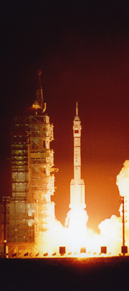

报告题目:The Interaction of Mars with the Solar Wind: Induced Magnetosphere and Ionospheric Ion Outflow
报告人:Prof. Hermann J. Opgenoorth(Swedish Institute of Space Physics , Uppsala, Sweden & International Space Science Institute, Bern, Switzerland)
时 间:2011年12月6日10:30-11:30
地 点:九章大厦天王星厅(A座405)
报告摘要:
With the exception of some remnant crustal magnetic field pockets the planet Mars has lost its internal magnetic field, and thus interacts with the impinging Solar wind plasma flow and the interplanetary magnetic field very much like an unmagnetised body. In that way its upper atmosphere suffers from heavy erosion due to solar wind drag. However, a closer look from satellites like the NASA Mars Global Surveyor MGS, and ESA’s Mars Express has revealed that the interaction with the Solar wind is much more complicated than that. During active Solar wind the interplanetary magnetic field-lines get draped around the planet, resulting in a small, but effective “induced magnetosphere”, which interacts with the imbedded plasma flow in a much more Earth-like fashion, i.e. through an intermediate plasma-sheet between the bow-shock and a variable magnetopause. Strong magnetic crustal anomalies add magnetic “domes” or “arcades” to the picture, which sometimes behave like so-called “mini-magnetospheres”. They are protruding from the magnetopause of the induced magnetosphere into the Solar wind and at their boundaries we expect to find dayside reconnection and other well known terrestrial phenomena of particle acceleration.
I will review some of the recent work using MGS and M-Ex data concerning plasma processes in the Martian upper atmosphere, i.e. ionospheric conductivities, possible current flows, and ion outflow from the planetary atmosphere in response to the variable Solar wind.
